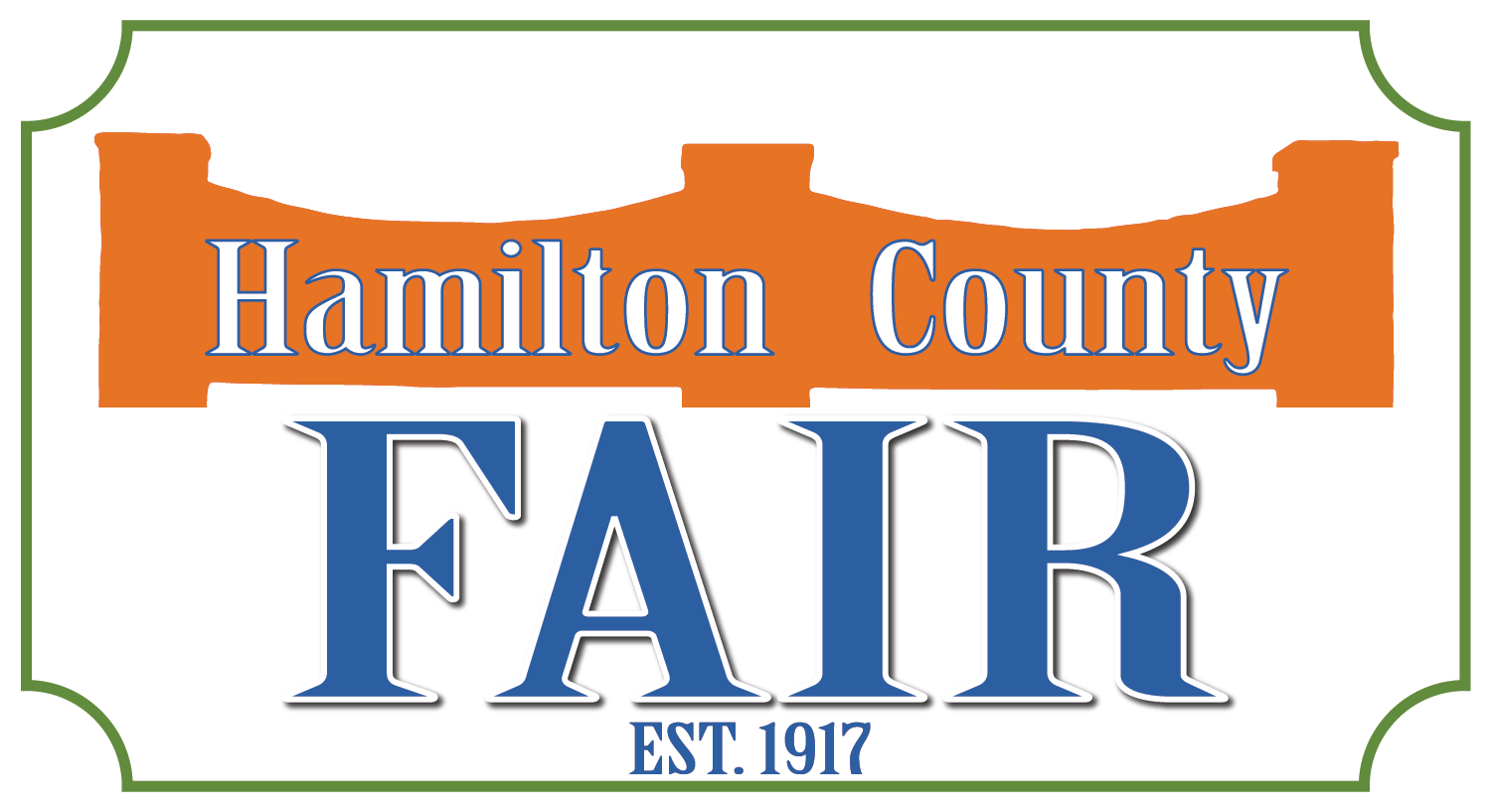History of the Fairgrounds
Our History
Early settlers organized the Hamilton County (Iowa) Agricultural Society and held the county’s first fair in the county seat of Webster City on October 14 and 15, 1857, just months after Hamilton County was officially organized as a county. One source states that the fair was held in a new red barn in the center of the 600 block of Division street?, another source states the first fair was held in a barn built of native hewn timber on the D. L. Hunter property on First Street and yet another source states the first fair was held in J. M. Funk’s barn on the northwest corner of Des Moines and Walnut Streets.
Classes for the 1857 fair included horses, mules, cattle, hogs, butter, best improved farm, grains, fruits, vegetables, quilts, cabinet work, tailoring, waxwork, beadwork, blacksmithing, boots, flour, bricks and a competition for lady equestrians. Speeches were also given by local dignitaries.
An annual fair of some kind was held each year at various locations in the city until the start of the Civil War. It is assumed that during the Civil War, no resources were available to continue the event.
In the winter of 1868, Judge Samuel L. Rose and R. E. Fairchild organized a county agricultural society for the purpose of holding a county fair. The organization purchased land for the fairground in southeast part of Webster City. Borrowing $500 from the county, the society cleared the grounds and laid out a one-third mile race track to hold the first fair at the end of September 1868.
This agricultural society sponsored annual fairs until about 1880 when the group disbanded and the land reverted to the county to be used as a county park. Many years later, this same land would finally become the permanent home of the Hamilton County (Iowa) Fair.
In 1886, agricultural supporters again banded together to revive the county fair to be held in the fall of that year. The Hamilton County (Iowa) Fair Association built new cattle and hog sheds, selling shares in the Association for $10 each to raise funds to pay for the buildings and the fair It is uncertain whether the fair was held on the West or the Southeast fairgrounds.
Highlight of the fall 1893 county fair was the marriage of a couple which a Cedar Rapids, Iowa newspaper later reported to be bigamous.
A new Floral Hall was built on the fair grounds in 1894, being 48 x 48 feet and 65 feet high in dome. A large gallery surrounded the whole building which was arranged for display and comfort of the patrons of the fair. Amusements scheduled for the 1894 fair included a sham battle between the military companies commanded by Capt. J. W. King of Ft. Dodge and Capt. August Hoffman of Webster City to portray all the reality of an actual engagement in battle array with flags flying and fifes and drums. Also scheduled were livestock and farm produce competitions, horse racing, balloon ascension and trapeze performances by Prof Tynana and his pet dog, bicycle races, ladies horse driving, livestock parade and a free concert. The ladies of the U. B. church served meals in the dining hall on the grounds.
On the 19th of September 1895, at the Hamilton County Fair and in the presence of five thousand people, the Rev. E. Robins officiated at the marriage ceremony of Louie Eleanor Crane and George Dingman. Before George?s death in 1927, the couple spent their married life farming in the Homer and Lehigh areas and were the parents of ten children.
The depression of 1896 found the Hamilton County (Iowa) fair boasting that they will be able to pay 50 cents on the dollar on premiums according to news articles in several state-wide newspapers.
Admission prices for the Fair held September 7-10, 1897 were 25 cents for those age 15 and over and 25 cents for double or singe teams. Children 5 to 14 were charged 10 cents, which entitled them to one free ride on the steam merry-go-round. Also in 1897, the Hamilton County (Iowa) Fair Association abolished the free list and even fair superintendents were required to pay admission to the grounds.
Martin E. Ed Nass, Hamilton County Historian, reported in his research that a Webster City Driving Park Association was organized in 1880 by thirty Webster City men to promote horse racing in the area. The Association purchased 42 acres of land on the western edge of the city and built a half-mile dirt track. Horse races were held at this location until the Association sold the grounds to the Hamilton County Fair Association in early 1897. It is assumed that many of the county fairs may have been at this location between 1897 to possibly 1907. This area, listed in the 1908 and 1912 Webster City Directories as Fair Grounds Park, was located at the South end of Fair Avenue, which today is the Webster City High School baseball diamond.
During the 1898 fair, Floral Hall caught fire and burned to the ground as the building was located too far from any hydrants to be saved. Many business displays and floral and textile entries were destroyed in the fire.
Officers elected for the Fair Association in 1899 were President J. R. Letts, Secretary J. W. Adams and Treasurer J. O. Lenning. Directors included F. P. Helmick, F. S. Currie, Cyrus Smith, John L. Kamrar and George W. Lee. The Hamilton County Journal of January 7, 1899 commented. With these gentlemen at the helm we do not see why this county should be a back number when it comes to the question of a fair?.
The Hamilton County Journal of February 17, 1900 printed the following report from Fair Association secretary J. W. Adams. The officers and stockholders of the Hamilton County (Iowa) Fair Association met Friday evening pursuant to previous notice, to decide upon a fair for 1900. A good number spoke in the interest of the society. Then a committee, consisting of D. C. Chase, J. O. Lenning and J. W. Allington were appointed to figure the cost of a new amphitheater and report at the next meeting. It was then talked of leasing the fairgrounds to a company of ten men who would be responsible for the amount asked of them to guarantee a first-class race meeting to be held any time this fall, they themselves to fix the date. It is believed this will be for the best interests of the association if followed out. All stockholders are requested to present their shares of stock to J. O. Lenning, at the Hamilton County State Bank, and receive new stock. This must be done as soon as possible, to perfect our stock books.
Charles Johnson housed his training stables on the fairgrounds, advertising in the March 27, 1900 edition of The Freeman that he was standing Adrian The Kid No. 0504, owned by O. W. Bige, for the season.
Highlight of the 1907 county fair was the Modern Woodmen of America day which included a parade with 600 participants from downtown to the fairgrounds, their own baseball tournament and many other competitions among the various town chapters. The local newspaper reported that 4,500 attended the fair that day. Attendance was also good during the other days of the 1907 fair with vaudeville stunts, Madame DeVon and her high school horses, horse races and performances by the Webster City band as the main attractions. The local newspaper also reported that two gamesters were arrested and fined for trying to bunco a local resident.
It is likely that no official fairs were held during the World War I years.
However, Extension work, with the support of the Farm Bureau, started in 1917. In 1918, county youth club work began. The county was also home to an extensive array of purebred livestock breeders who exhibited and sold their livestock on state and national levels. In addition, the farm economy was enjoying a strong recovery, so all businesses felt prosperous. These programs and financial progress converged to encourage the formation of a new county fair in 1918.
1918 Begins New Era For Hamilton County Iowa Fair
Fred Hahne, long-time fair supporter, printer of many of the yearly fair premium books and the Webster City businessman who founded the Aberdeen-Angus Journal in 1919, wrote about the fair’s history in the August 28, 1941 edition of his newspaper the Webster City Observer. In 1918 the whole system was reorganized with W. F. Cole in charge. The fair was held Sept. 25, 26 and 27 in the old livery barn, where Wehrheim’s sale barn now stands (Seneca Street) and in the W. A. McCollough factory (now corner of 2nd & Superior Streets) building. This 1918 fair was the first real Hamilton county fair under an organization similar to that of the 1941 exposition. F. A. Huddlestun was the first president of the new organization, and under his leadership, everyone was admitted without charge. Anyone who wished to see the vegetables and handiwork exhibits shown on the second floor of the McCollough factory paid a fee of 10 cents.
At 1o’o clock on the day of Sept. 27, 1918, the prize livestock of the county were paraded through the business district led by the Webster city band. The Hamilton county agriculture exposition committee reported that this fair took in $1650, while expenses were $1550. Hamilton countians were jubilant that the expenses had cleared $100, for financial success the first year would make it an annual affair, but had it been a failure the new fair would have died as the old ones had. This was the first of an uninterrupted series of fairs which have been held annually since then in Webster City.
The organizers of the 1918 county fair included the newly formed county Farm Bureau organization, county businessmen and many prominent county livestock breeders headed by Frank A. Huddlestun, a farmer and nationally known Shire breeder of Webster City. The organization was officially incorporated as the Hamilton County Exposition in mid-1919.
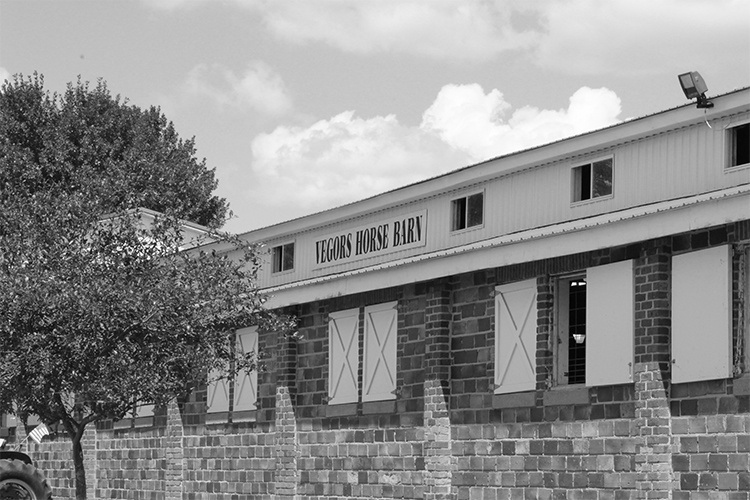

In 1919, county livestock breeders and businessmen formed the Hamilton County Sales Pavilion Company to raise funds to erect permanent buildings on the current fairgrounds. The company sold stock to 160 county residents at $100 each which was enough to pay for building the Hamilton County Sales Pavilion and Stock barn at a cost of $15,205 and a hog barn at a cost of $2,109. The W. J. Zitterell Company of Webster City was the contractor.
Also in 1919 it appears that a Boys Purebred Sow and Litter Club was organized with 27 members. Each of the youngsters started with a purebred sow and the group raised an average of seven pigs per litter. These projects were exhibited at the 1919 fair. The first sale in the Sales Pavilion was for the Purebred Sow and Litter Club held during the last day of the 1919 fair. First animal through the ring, owned by Tracy Jaycox, was a Poland China named Grand Giant selling for $350. Twenty head sold for an average of $100 each at that first sale.
The Webster City Freeman reported in its September 1, 1919 edition The greatest swine show seen thus far this year outside the state fair will probably be seen at the Hamilton county exposition this week. More than enough entries have come in thus far to fill the hog barn with a capacity of over three hundred. To accommodate the overflow, a temporary hog barn is now being erected on the grounds.
Hamilton county is fast gaining a reputation as the home of fancy porkers and one of the big features at the county fair is certain to be the display of swine. The new hog barn is 164×36 feet and contains 90 pens 7×6 feet wide. This barn is thoroughly sanitary and well built throughout, with an asphalt roof.
Another big feature at the fair is sure to be the sales pavilion. This fine building is solidly built of brick and has 80 double stalls to be used for the exhibit of cattle, horses and sheep. About the sales ring, there are seating accommodations for 600 people. There are also two furnaces under the sales ring roof for heating it when sales are held there during cold weather. This building is one of the finest to be found on any county fairground in Iowa.
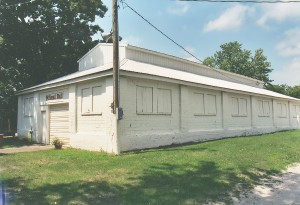
Floral hall will also be a big surprise to a good many people. This building is also of permanent structure. It is sufficiently large to accommodate as many displays as will be entered.
In 1920 the Daily Freeman Journal reported that 750 hogs and 250 head of cattle were entered in the fair, along with 50 head of sheep, 50 ponies and a large number of fowls.
Watermelon Day, sponsored by the Webster City Chamber of Commerce, was moved to the fair in 1921 as was the Old Settlers Reunion. That year more than 30,000 pounds of watermelon were served for free to 6,000 fairgoers. This was also the first year for the newly formed Baby Beef Club.
In 1922 the fair adopted the Iowa State fair standard premium classification list. Also in 1922 the Fair Association erected a new exhibit building at a cost of $1,740. Contractor was E. P. Carpenter and Sons of Woolstock. A Daily Freeman Journal report stated The structure will be 40 x 96 feet in dimensions with ten foot posts. The exterior will be neat in appearance and of pebble dash finish, while the interior will be laid off in display rooms ten feet deep by twelve feet wide and it is understood that these partitions will be adjustable in order that spaces may vary in size to accommodate the exhibitor. For the present the floor will be composed of gravel, however, the building and floor elevations will be so arranged as to permit cement floors being laid in another year, and it is hoped that the association will be sufficiently successful to carry on their building plans until the local fair will be properly housed. The building will be located halfway between the brick building now on the grounds and the brick cattle and horse barns. The board has selected a pretty site without destroying a single tree. In the twenty-foot street between the booths will be built a narrow display rack for garden and agricultural products thus giving the whole arrangement the air of a real fair. The roof will be of the monitor style and will be the only means of lighting except that each booth will be arranged for electric lighting. This sort of roof will afford ample ventilation also. After construction was completed and just prior to the fair, the Fair Association laid a cement floor in the building and allotted most of the new space to the women’s division displays.
Girls club work officially became organized in Hamilton County in 1923-24 adding more exhibits to the fair.
Long-time fair secretary L. L. Lyle started the 4-H baby beef auction about 1930 with labor donated by local auctioneers, ring men and truckers, ensuring that the young exhibitors were able to take home 100% of the sale price.
As the Depression Years progressed it became more difficult for the Hamilton County Fair Association to continue the fair. But the Fair did continue due to the Fair Board’s good management and adherence to sound financial practices. The fair was a good way for everyone to forget their troubles for a short time to enjoy the displays and contests.
With the assistance of the Works Projects Administration (WPA), many changes occurred on the fairgrounds in 1940-1941. The amphitheater was enlarged, extending the roof out 36 feet on each end and 22 feet in front, making seating capacity for 3500 people. A new 4-H club calf barn was erected. At 50 x 120 feet, it would accommodate 160 head of calves. An agricultural display building of 50 x 120 feet was also built beside the club calf barn to be used for agricultural displays, exhibitors’ booths, and poultry. Both of these WPA-built concrete buildings are still in use today for the same purposes.
For the years 1942 and 1943, due to the country’s involvement in World War II, no full-scale fair was held. No premium books were printed to conserve paper. However, 4-H Club events and shows were held on the fairgrounds during what would have been the normal fair run. According to the 1967 Fifty-Year History of Hamilton County Extension Service compiled by Lynn Habben, “At the 1942 Hamilton County Fair due to the shortage of personnel on the local police force and the state highway patrol, it was necessary for the 4-H club members to handle traffic at the fairgrounds.”
The Extension Service Fifty-Year History also noted that a calf wrestle was conducted by the Hamilton County Fair Association which was limited to 4-H boys 15 years of age and under. This contest was held two evenings at the County Fair and created considerable interest. The calves were donated by business firms from throughout the county.
By the end of World War II, prosperity returned. There was a huge growth in the 4-H Club program necessitating enlarged facilities to accommodate new displays and contests.

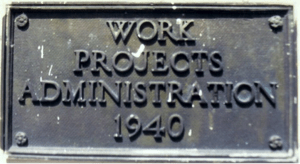
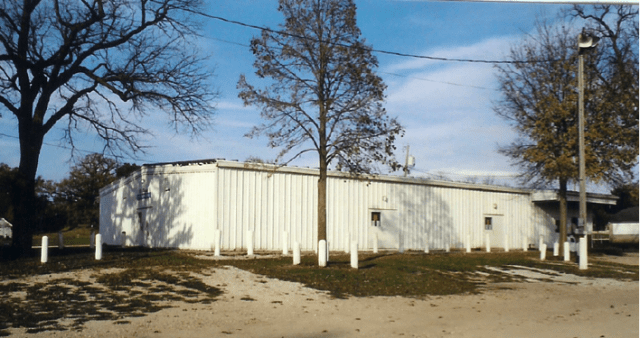
In his will, Edward P. Prince, a local attorney who died in 1954, left a bequest to the Hamilton County (Iowa) Fair to aid in the construction of a community building. Completed in 1963, the building truly serves the community as Ed Prince so desired, being utilized during the fair as an office and commercial display center and for wedding receptions and community events during the remainder of the year.
In 1984, county horse enthusiasts raised funds to construct a horse show arena on the grounds. The late Jimmy Baker prepared the arena floor. This 300 x 100 high-tensile fence arena was dedicated to the memory of the late Richard Claude. The arena is used during non-fair times for outside horse shows and by the county 4-H horse project members for their summer-long, weekly work nights.
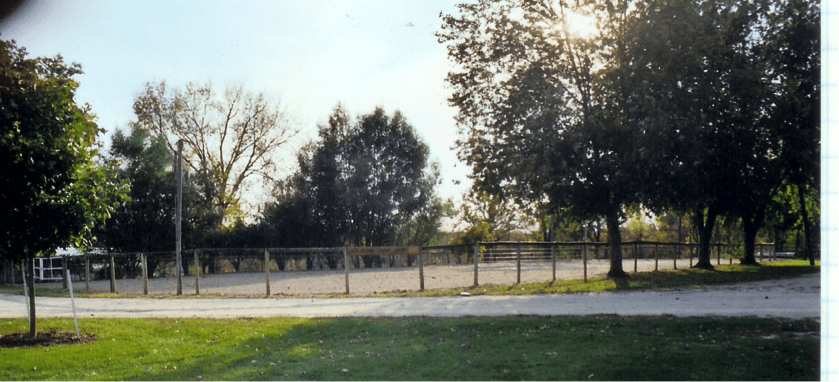
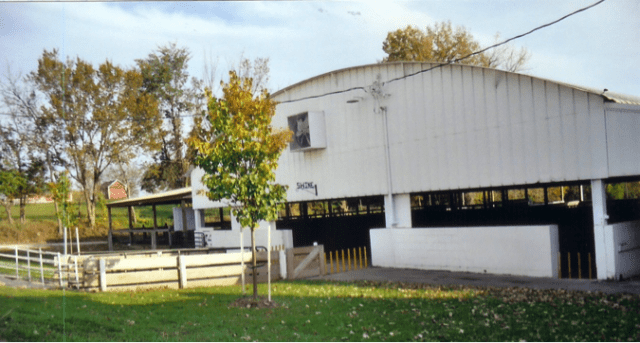
The swine, sheep and poultry complex was built in the late 1960s and early 1970s.
Local master brick masons constructed a new brick and granite entry gate for the Fairgrounds in 1991 to replace the original one destroyed by a semi tractor in 1969. The entry gate was the gift of Gladys Johnson, in memory of her father J. H. Shaffer, the Hamilton County Sheriff from 1899 to 1904. The gate also features granite 4-H and FFA emblem inserts.
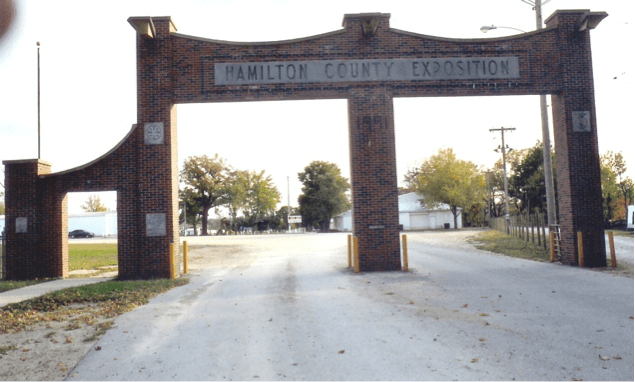

The Fair Board, county horsemen and 4-H and FFA members joined forces in 1995 to renovate the interior of the horse barn which was originally the 1919 Stock barn. For many years, exhibitors stalled their horses in the old draft horse stalls with wooden gates as stall fronts. The interior rows of tie stalls were removed in 1995 and the outside rows of stalls were remodeled with modern stall fronts with metal top bars and wood inserts for the bottom half. The wood inserts were salvaged from the dismantled interior tie stalls. Portable tack stalls run the length of the middle of the barn. A larger overhead door was added to the south end of the building along with additional wash racks in the southeast corner.
Dedicated in 2001 was the Hamilton Plaza, a landscaped, meeting court located in front of the Show Arena, which quickly became one of the busiest spots on the Fairgrounds.
Supporters purchased engraved memorial bricks used in the deck of the plaza and donated benches and metal picnic tables.
A combined effort of the Hamilton County Fair Board and Fair Foundation, this project became the favorite spot on the grounds, reminiscent of the Comfort Tents used in the first half of the 20th century.
Lynn Habben, former long-term Hamilton County Extension Director wrote about the Show Arena in the 1967 Fifty-Year History of Hamilton County’s Extension Service, “A valuable addition to the Hamilton County Fairgrounds was an all-metal livestock pavilion which cost in the neighborhood of $17,000. Nearly $8,000 of this amount was raised by 4-H leaders and other contributors in the county. The 100′ by 60′ building was first used at the 1959 Hamilton County Fair and had a seating capacity for about 750 people. The building is insulated and can be heated for year-round usage. Four state purebred swine sales were held in the building the first few months.”

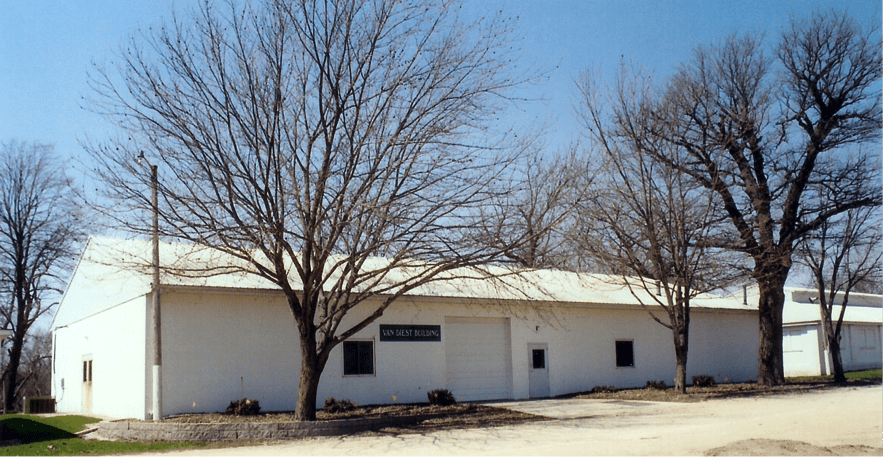
Bob and Mary Van Diest funded the major renovation of Hamilton Hall in 2002 to convert the building for display of 4-H Club and FFA non-livestock projects during the fair. Smaller community events are also held in the newly re-named Van Diest Building when the fair is not in session. It was the first time in the Fair’s history, that 4-H and FFA members and Extension personnel were able to enjoy the comfort of air conditioning during the fair’s annual July run.
Fair officials renovated the Co-op Building in 2002 with insulation and air conditioning to expand space available to commercial exhibitors during the Fair.

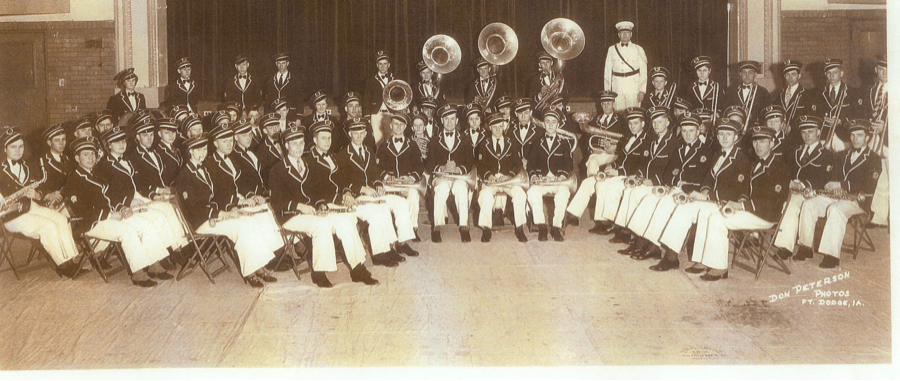
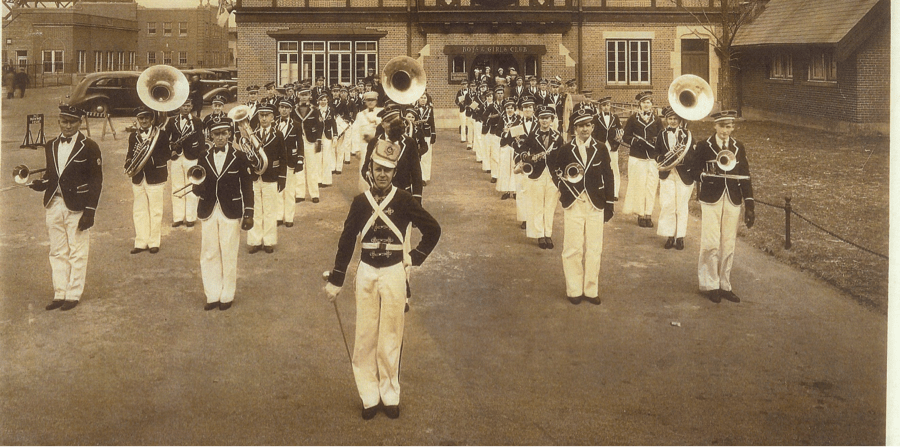
2002 was also the 100th Anniversary of the 4-H Club program nationwide. To celebrate, a reunion of the 1930s era Hamilton County (Iowa) 4-H Band was held. Several times during the 1930s this band was featured at the International Live Stock Exposition in Chicago. Former members returning in 2002 presented an afternoon concert, demonstrating that age had not diminished their talents.
In April of 2004, Fair Board and Fair Foundation members broke ground for a new shower/restroom facility to replace antiquated facilities located in the 1919 Sales Pavilion.
Many local contractors were involved in the project and the building was completed in time for the July 2004 fair.
The building was funded by public donations and funds from the Hamilton County (Iowa) Fair.
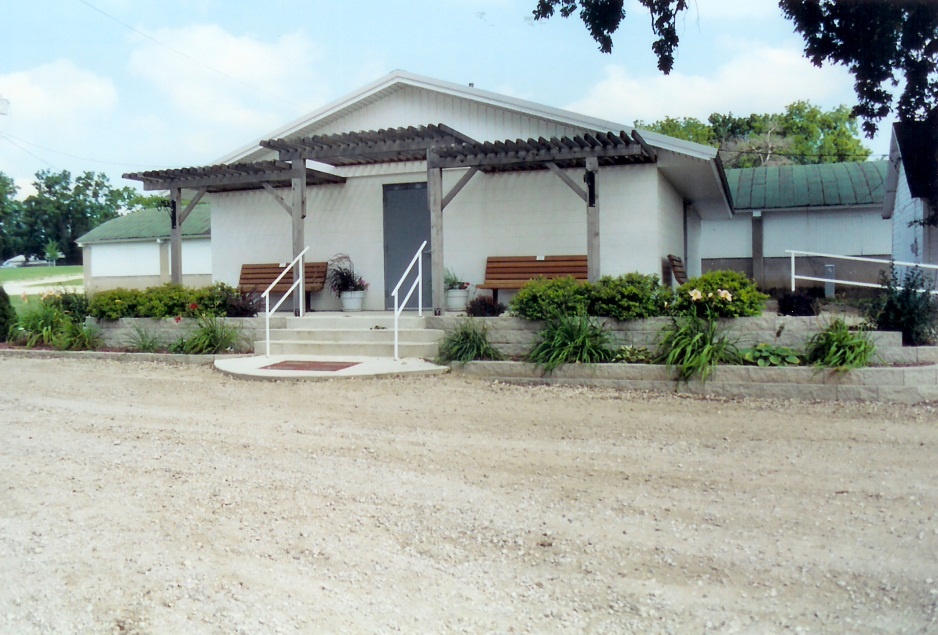

The Fairgrounds has one of the finest dirt tracks in Iowa and weekly stock car races held during the spring and summer months attract large crowds to the Fairgrounds, helping to finance the continuation of the fair and the fairgrounds. The track and grandstand were constructed in 1938-1939 under the leadership of L. L. Lyle, long-time fair secretary. Continuous upgrading of facilities including a new refreshment stand and renovated rest rooms contribute to making this a high quality track.
Contact us for more info
1200 Bluff St
P.O. Box 563
Webster City, Ia
[email protected]
515-832-1443
